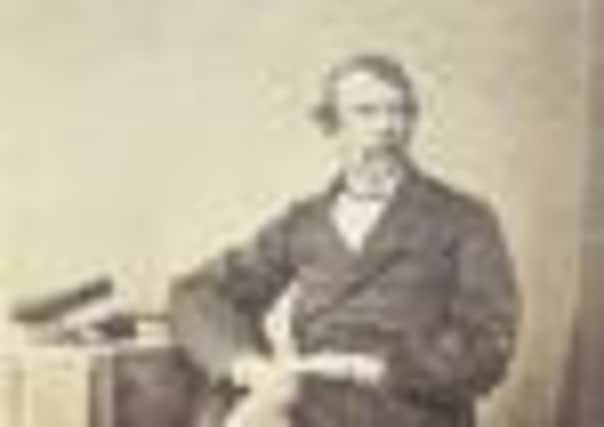Dr Livingstone, warts and all, I presume?


Now the extraordinary life of Blantyre-born David Livingstone is to be celebrated in a major “warts and all” exhibition to be staged at the National Museum of Scotland to coincide with the 200th anniversary of his birth in 2013.
It will tell how the Scot gained almost mythic “celebrity” status in 19th-century Britain as a scientific investigator and explorer, but enjoyed fame at the expense of his wife and family.
Advertisement
Hide AdAdvertisement
Hide AdIt is also hoped the Edinburgh exhibition – and an accompanying book of research about his life and legacy – will lead to a revival of interest in Livingstone, who became one of the great European explorers of Africa, as well as one of Britain’s best-known missionaries.
Such was his celebrity in his own day that after he died of malaria in Africa, his body was returned for burial in London in Westminster Abbey.
Rare personal items are being reunited for the first time for the exhibition, including an antelope net, a weaving loom, hand-drawn maps, letters, his compass, a wooden slave stick – used for restraint – and iron shackles.
Pride of place will go to two caps worn by Livingstone and New York Herald journalist Henry Stanley when he found the missing explorer in the jungle and greeted him: “Dr Livingstone, I presume?”
Also on display will be the earliest known portrait of Livingstone, when he started training as a missionary.
Part of the exhibition will be dedicated to Livingstone’s legacy in Africa, where he is still fêted as a hero. Staff from the Chambers Street attraction have visited the National Museum of Malawi to discuss the loan of artefacts and possible collaborations.
The exhibition will be the most significant devoted to Livingstone’s life and legacy since one was created by the National Portrait Gallery, in London, in 1996. Among the organisations working on the project are the National Trust for Scotland, which runs the David Livingstone Centre in Blantyre, the National Library of Scotland, which holds many of his personal letters, the Royal Geographic Society and the London Missionary Society, at which Livingstone trained.
Advertisement
Hide AdAdvertisement
Hide AdSarah Worden, curator of African Collections at NMS, said: “The exhibition will trace Livingstone’s whole life story, from his humble beginnings in Blantyre, working in a cotton mill, studying medicine and divinity, then working as a missionary in Africa, and becoming a national hero in Victorian Britain after publishing his first book.
“He had a vision to end the slave trade and to open up Africa to Christianity and lawful commerce. He was the first European to cross Africa from west to east, and whilst he made few converts to Christianity, his success as an explorer and his work as an abolitionist secured for him a lasting reputation.
“However, he wasn’t a particular good husband or father, and the exhibition will look at that aspect of his life and the relationship he had with his fellow missionaries.”
Dr Lawrence Dritsas, a research fellow at Edinburgh University science studies unit, said: “You have to remember that this is someone who pretty much left his wife and family behind.
“He was not a particularly nice person and did not get on well with many, many people. He was a difficult man to like.”
• Doctor Livingstone, I Presume? is at the National Museum of Scotland from November 2012 to April 2013.